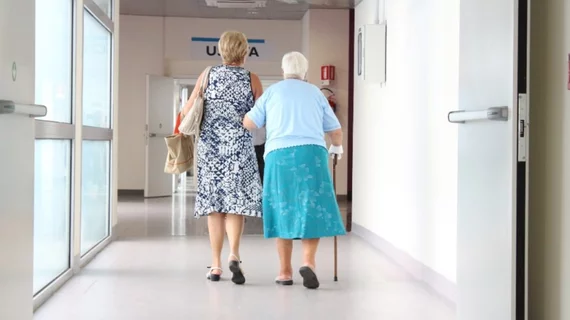‘An excellent outcome’: TAVR safe and effective for patients in their nineties
Transcatheter aortic valve replacement (TAVR) is a safe and effective treatment option for patients in their nineties, according to new data published in The American Journal of Cardiology.[1]
The study’s authors noted that more and more nonagenarians—individuals between the ages of 90 and 99—are going to require aortic valve replacement due to severe aortic stenosis (AS) as time goes on. However, many prior TAVR trials have excluded patients that old, making the procedure’s safety and effectiveness unclear.
To learn more, the group tracked data from 183 patients who underwent TAVR from August 2009 to September 2021 in Finland. The mean patient age was 91.3 years old, and 62.8% were women. The mean EuroSCORE II was 6.0. Transfemoral access was used for all but two patients, who underwent transaortic or subclavian TAVR instead. While 43.7% of patients presented with a history of atrial fibrillation, the rates of prior percutaneous coronary intervention, myocardial infarction and stroke were 23%, 10.9% and 11.5%, respectively.
Overall, the 30-day mortality rate was 5.5% and 30-day stroke rate was 3.8%. Twelve percent of patients experienced a major or life-threatening bleeding event, and 17.5% had a major vascular complication. The 30-day permanent pacemaker rate was 10.4%.
One-year mortality was 11.6%, the group noted, and a better-than-anticipated survival rate in the months after TAVR suggested “a possible fast recovery after TAVR”
“The present findings demonstrated that TAVR in carefully selected nonagenarians is safe and effective therapy, which should not be discarded solely by age,” wrote first author Matti Riihiniemi, a specialist with Medical Research Center Oulu in Finland, and colleagues. “In our series, one-year survival of nonagenarians who underwent TAVR was comparable to the year-, age- and sex-matched general Finnish population, which can be held as an excellent outcome when considering the high mortality associated with untreated severe symptomatic AS.”
Riihiniemi et al. also noted the high rates of bleeding and vascular complications within their patient population, pointing to some possible explanations.
“There have been prior reports about nonagenarians being more prone than their younger counterparts to vascular- and bleeding complications, possibly attributed to higher prevalence of peripheral vascular disease and fragility of tissues common to the elderly,” they wrote. “In addition, a majority of our patients were female, who have higher risk for such complications, assumedly due to their more complex vascular anatomy. However, advances in devices, procedural technique, operator experience and perioperative care have reportedly improved outcomes following TAVR.”
Read the full analysis here.

